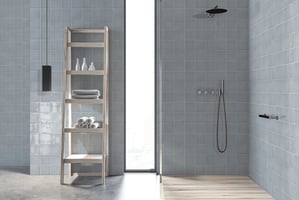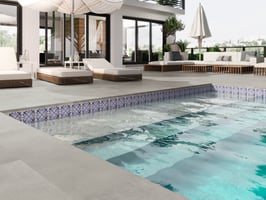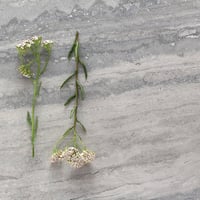Transform your kitchen and bathroom with vibrant small tiles that add a pop of color and...
Create a Trendy Look with Textured Tile Backsplash
Transform your kitchen or bathroom with a trendy and stylish textured tile backsplash. Discover the various ways you can use textured tiles to create a unique and captivating look that will impress your guests.
Choosing the Right Textured Tile
 When it comes to creating a trendy look with a textured tile backsplash, the first step is to choose the right textured tile. There are many options available, so consider the overall style and color scheme of your space. If you have a modern or contemporary kitchen or bathroom, you might opt for a sleek and smooth textured tile. On the other hand, if you have a more rustic or traditional space, a rougher and more textured tile might be the perfect choice. Additionally, consider the size and shape of the tile. Larger tiles can create a bold and dramatic look, while smaller tiles can add a more intricate and detailed pattern.
When it comes to creating a trendy look with a textured tile backsplash, the first step is to choose the right textured tile. There are many options available, so consider the overall style and color scheme of your space. If you have a modern or contemporary kitchen or bathroom, you might opt for a sleek and smooth textured tile. On the other hand, if you have a more rustic or traditional space, a rougher and more textured tile might be the perfect choice. Additionally, consider the size and shape of the tile. Larger tiles can create a bold and dramatic look, while smaller tiles can add a more intricate and detailed pattern.
Another important factor to consider when choosing the right textured tile is the material. Common options include ceramic, porcelain, and natural stone. Each material has its own unique properties and benefits. Ceramic tiles are durable and easy to clean, making them a popular choice for kitchens and bathrooms. Porcelain tiles are highly resistant to moisture and stains, making them ideal for areas that are prone to spills or splashes. Natural stone tiles, such as marble or travertine, add a luxurious and elegant touch to any space. Consider your budget and maintenance preferences when selecting the material for your textured tile backsplash.
Exploring Different Textured Tile Patterns
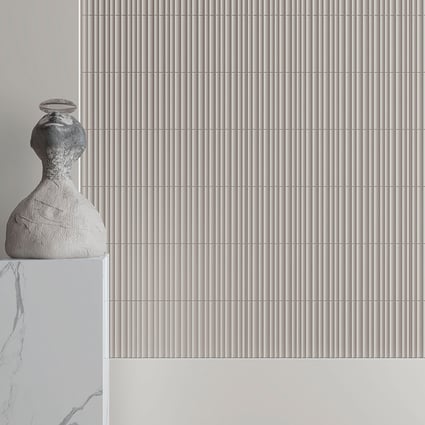 Once you've chosen the right textured tile, it's time to explore different patterns to create a unique and captivating look. There are countless options available, from classic subway patterns to more intricate mosaics. One popular pattern is the herringbone, which adds a sense of movement and visual interest to the space. Another option is the picket, which creates a timeless and elegant look. If you want to make a bold statement, consider a geometric pattern or a combination of different tile sizes and shapes. Play around with different layouts and combinations to find the pattern that best suits your style and preferences.
Once you've chosen the right textured tile, it's time to explore different patterns to create a unique and captivating look. There are countless options available, from classic subway patterns to more intricate mosaics. One popular pattern is the herringbone, which adds a sense of movement and visual interest to the space. Another option is the picket, which creates a timeless and elegant look. If you want to make a bold statement, consider a geometric pattern or a combination of different tile sizes and shapes. Play around with different layouts and combinations to find the pattern that best suits your style and preferences.
When exploring different textured tile patterns, consider the size and scale of your space. Larger patterns can overwhelm a small kitchen or bathroom, while smaller patterns might get lost in a large area. Additionally, think about the overall aesthetic you want to achieve. A symmetrical pattern can create a sense of order and balance, while an asymmetrical pattern can add a touch of creativity and whimsy. Don't be afraid to mix and match different pattern styles to create a truly unique and personalized look.
Enhancing the Space with Color and Texture
 Color and texture play a crucial role in enhancing the overall look and feel of your textured tile backsplash. When it comes to color, consider the existing color scheme of your kitchen or bathroom. If you want a cohesive and harmonious look, choose a textured tile that complements the colors of your cabinets, countertops, and walls. For a bold and contrasting look, opt for a textured tile in a different color family. Remember that lighter colors can make a space feel larger and brighter, while darker colors can add depth and sophistication.
Color and texture play a crucial role in enhancing the overall look and feel of your textured tile backsplash. When it comes to color, consider the existing color scheme of your kitchen or bathroom. If you want a cohesive and harmonious look, choose a textured tile that complements the colors of your cabinets, countertops, and walls. For a bold and contrasting look, opt for a textured tile in a different color family. Remember that lighter colors can make a space feel larger and brighter, while darker colors can add depth and sophistication.
In addition to color, texture can also add visual interest and dimension to your textured tile backsplash. Consider tiles with raised patterns or embossed designs for a tactile and unique look. You can also mix different textures within the same backsplash to create a dynamic and layered effect. For example, pair a smooth and glossy tile with a rough and textured tile to create a visually striking contrast. Don't be afraid to experiment with different combinations to find the perfect balance of color and texture for your space.
Mixing and Matching Textured Tiles
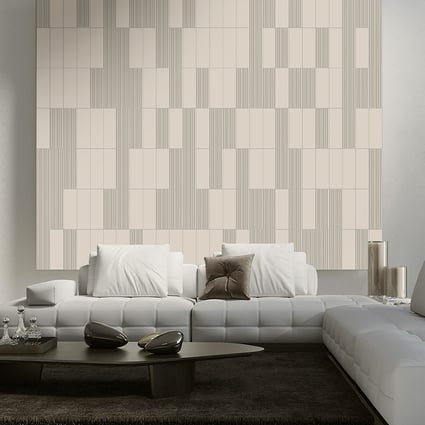 One way to create a truly personalized and captivating textured tile backsplash is by mixing and matching different textured tiles. This allows you to create a unique and one-of-a-kind look that reflects your personal style. When mixing and matching textured tiles, consider the overall theme or concept you want to achieve. Do you want a cohesive and coordinated look, or do you prefer a more eclectic and bohemian vibe? Look for textured tiles that share a common element, such as color or pattern, to create a sense of unity.
One way to create a truly personalized and captivating textured tile backsplash is by mixing and matching different textured tiles. This allows you to create a unique and one-of-a-kind look that reflects your personal style. When mixing and matching textured tiles, consider the overall theme or concept you want to achieve. Do you want a cohesive and coordinated look, or do you prefer a more eclectic and bohemian vibe? Look for textured tiles that share a common element, such as color or pattern, to create a sense of unity.
Another approach is to create a focal point or accent area by using a different textured tile. For example, you can use a mosaic tile as a border or create a feature wall with a unique and eye-catching pattern. Mixing and matching textured tiles also allows you to play with different shapes and sizes. Consider combining rectangular and square tiles, or mix different tile sizes within the same pattern. This adds visual interest and creates a dynamic and layered look.
Adding Finishing Touches with Grout and Trim
To complete the look of your textured tile backsplash, don't forget about the finishing touches. Grout and trim can make a significant difference in the overall appearance of your backsplash. When it comes to grout, consider the color and width. A contrasting grout color can make the individual tiles stand out and add visual interest. On the other hand, a matching grout color can create a seamless and cohesive look. The width of the grout lines also affects the overall aesthetic. Narrow grout lines create a more contemporary and sleek look, while wider grout lines add a rustic and traditional touch.
Trim, such as bullnose or pencil liners, can add a polished and finished look to your textured tile backsplash. These decorative pieces are often used to create a smooth transition between the backsplash and the adjacent surfaces, such as countertops or cabinets. Consider the material and color of the trim to ensure it complements the overall style of your space. For example, a metallic trim can add a modern and glamorous touch, while a ceramic trim can enhance a traditional or rustic look.





